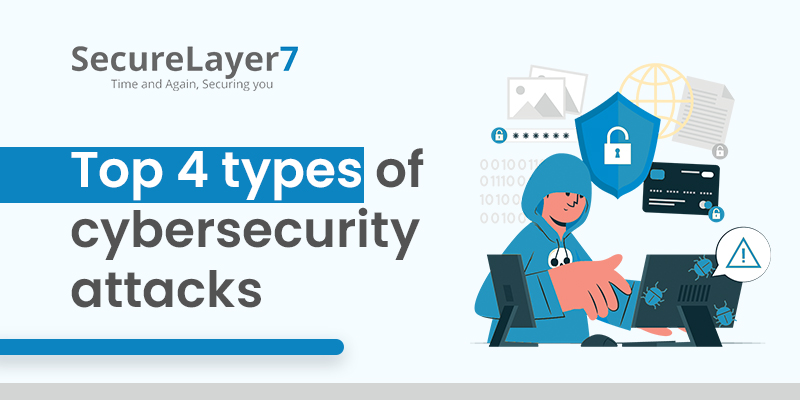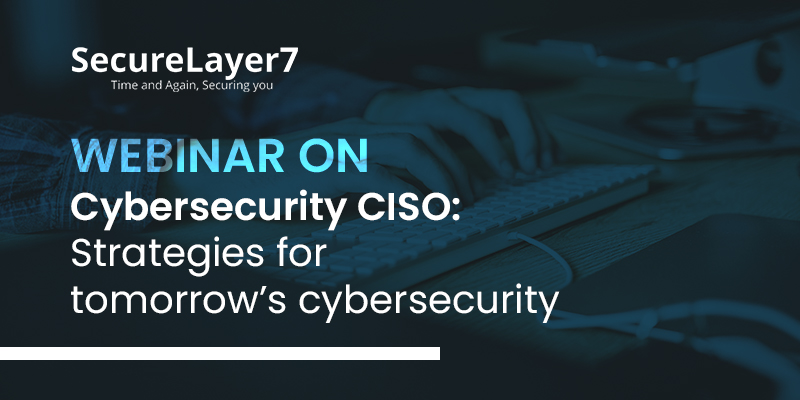
Top 4 Types of Cyberattacks
June 10, 2021
Webinar Cyber Security CISO: Strategies of tomorrow’s cybersecurity
June 28, 2021
Cloud security alludes to the policies, technologies, controls, and administrations or services that secure cloud data, applications, and infrastructures from dangers.
Cloud computing is the conveyance of services of hosting, including programming or software, storage, and hardware, over the Internet. The advantages of fast delivery, adaptability, low direct expenses, and versatility, have made cloud computing basically extensive among companies, everything being equal, frequently as a component of a multi/hybrid cloud framework architecture. This additionally gives a weightage to cloud security.
Cloud Security and challenges
Since the public cloud doesn’t have clear edges or boundaries, it presents an essentially unique security intelligence. This turns out to be considerably harder while receiving present-day cloud methods like Continuous Deployment and automated Continuous Integration (CD/CI) techniques, circulated serverless structures, and transient resources like Functions as a Service and holders.
A portion of the high-level cloud-local security challenges and the various layers of hazards encountered by the present cloud-based establishments include:
- Complex Surroundings
Overseeing security in a steady manner in the multi-cloud and crossbreed environments supported by ventures these days requires tools and strategies that work consistently across open cloud suppliers, private cloud suppliers, and on-premise arrangements—including branch office edge insurance for geologically appropriated associations.
- Expanded Attack scope
The public cloud habitat has become an enormous and exceptionally appealing attack scope for attackers who abuse ineffectively protected cloud entrance ports to get to and upset data and works in the cloud. Account takeover, Malware, Zero-Day, and numerous other malevolent dangers have gotten into daily lives.
- Consistently Changing Workloads
Cloud resources are decommissioned and provisioned powerfully—at scale and at speed. The customary security tool is just unequipped for implementing security policies in a particularly adaptable and dynamic surrounding with its always dynamic and transient workloads
- Absence of Visibility and Tracking
In the IaaS model, the cloud suppliers have full authority over the framework layer and don’t disclose it to their clients. The absence of permeability and control is additionally stretched out in the SaaS and PaaS cloud models. Cloud clients frequently can’t distinguish and measure their cloud resources or envision their cloud surroundings.
Cloud Security of data for companies
Organizations are gathering huge measures of information and data, going from exceptionally classified business, monetary, and client information to genuinely insignificant data. They’re additionally moving increasingly more of their information to the cloud and storing it in more places than any other time in recent memory – public, hybrid, and private cloud distributed environments, programming as-a-service applications, etc.
As they do this, organizations are finding exactly how confounded security and protecting all their information across numerous surroundings can be. For instance:
- They presently don’t know where every one of their applications and information is
- With the majority of their applications and information housed on third-party foundations, organizations presently don’t have perceivability into who is getting access to and utilizing their applications and information, which gadgets are being utilized for access, or how their information is conceivably being shared or utilized
- They have no grasp of how cloud providers store and protecting their information
- Despite the fact that most cloud suppliers have best-in-class security, this security is restricted. All things considered, organizations and cloud suppliers share obligations regarding cloud security.
- Various cloud suppliers have differing abilities, which can bring about conflicting cloud data security
The concept of Zero Trust and reasons to adopt
Zero Trust was first presented in the year 2010 by John Kindervag who, around then, was a senior analyst for Forrester Research. The essential rule of Zero Trust in cloud security isn’t to naturally confide in any person or thing inside or outside of the organization—and check (i.e., approve, investigate and secure) everything.
For instance, Zero Trust advances a lesser advantage administration procedure whereby clients are just offered access to the assets they need to play out roles. Essentially, it calls upon the developers to guarantee that web-confronting applications are appropriately protected. For instance, if the developer has not impeded ports reliably or has not carried out authorizations on a “depending on the situation” premise, a hacker who takes control over the application will have advantages to recover and alter information and data from the database.
Likewise, Zero Trust networks make use of micro-segmentation to make cloud network security undeniably more granular. Micro-segmentation makes secure zones in server centers and cloud organizations subsequently sectioning the workloads from one another, protecting everything inside the zone, and applying strategies to get traffic between zones.
Cloud data security is the act of getting an organization’s data in a cloud surrounding, any place that information is located, regardless of whether it’s very still or moving, and whether it’s overseen inside by the organization or remotely by an outsider.
This routine has gotten progressively significant as more organizations have changed from building and dealing with their own data centers to store their applications and information in the cloud all things being equal.


